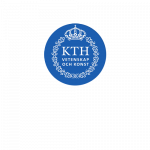Introduction
H&M Business Tech and the Optimization and Systems Theory division at KTH is looking for a Master Thesis student that wants to combine robust optimization, data science and Python programming to help us improving supply chain methods.
Some of our use cases have the structure that a set of parameters are optimized with respect to an objective function based on a description of the future. This optimization problem is based on a machine learning based prediction of said future – providing parameters for the problem. So, we have an optimization problem with uncertain parameters. These uncertainties are taken into account using naive methods. As optimization algorithms utilize whatever structures in the problem formulation they can utilize there is a risk that we use inferior solutions, or that if we can devise better optimizations problem formulations and solvers we can get even better and robust plans. If we would find out that our current methods are good even in comparison to a more refined approach this would still be of value.
Below follows a brief description of two cases. The thesis could focus on one, or be more general and aim at all use cases.
- Ordering goods from factories
Based on historical sales, product features, intended lifespan, and buyer’s belief captured in a ranking tool, a forecast model predicts the most likely article demand per planning market. The forecast is pre-trained on past seasons’ articles and their features.
Once the weekly demand forecast is known, buying suggestion (e.g. “1200 pcs on week 1, then 500 pcs week 7”) are made. Our models find the order quantity and split between ground and trail orders that maximizes selling speed while satisfying a set of business rules. For this we use linear MIP, solved with Gurobi or CBC depending on problem size. - Allocation of goods to warehouses
Here, the problem is to allocate goods to warehouses. The prediction step is to predict the future demand of each good, and the optimization step is to allocate goods to the warehouses so that the risk of running out of stock is kept low enough while at the same time not maintaining an unnecessarily large stock. With the current solution, the prediction part of this flow estimates statistics of the demand distribution as a way to ensure that enough article are in store.
Thesis work outline
The thesis could consist of all or a selection of the following sub steps
• Understanding the use cases
• Literature study
• Analysis of the predictions
• Analysis of the effect of errors on optimization
• Formulation of the above as a robust optimization problem
• Proposal of solutions to the robust optimization problem
• Solving the problem for a number of illustrative cases
• Comparison of results and suggestions for future improvements
The thesis will be hosted by H&Ms research group and conducted in close collaboration with H&M staff and preferably co-located if Covid allows for that. The candidate will have access to necessary H&M data infrastructure and code. Supervisor at KTH will be Jan Kronqvist at Optimization and Systems Theory.
Candidate profile:
The thesis candidate needs to combine a talent for mathematical modeling and business understanding as well as knowledge in optimization, data science and programming in order to complete the thesis successfully. The environment is Python so it is a necessity to know Python and preferably Pandas. The intention is not to develop new methods, rather to use existing packages successfully.
The course SF2812 Applied Linear Optimization is considered a prerequisite, as some prior knowledge in mixed-integer linear programming is needed. For a complete list of course requirements for a thesis in Optimization and Systems Theory, see https://www.kth.se/social/course/SF280X/page/course-pm-64/
The thesis should be started fall 2021, or at latest January 2022.
Please send a cover letter, CV and grade transcripts at latest 3 October to Marco Trincavelli marco.trincavelli@hm.com with Jan Kronqvist jankr@kth.se as CC.


